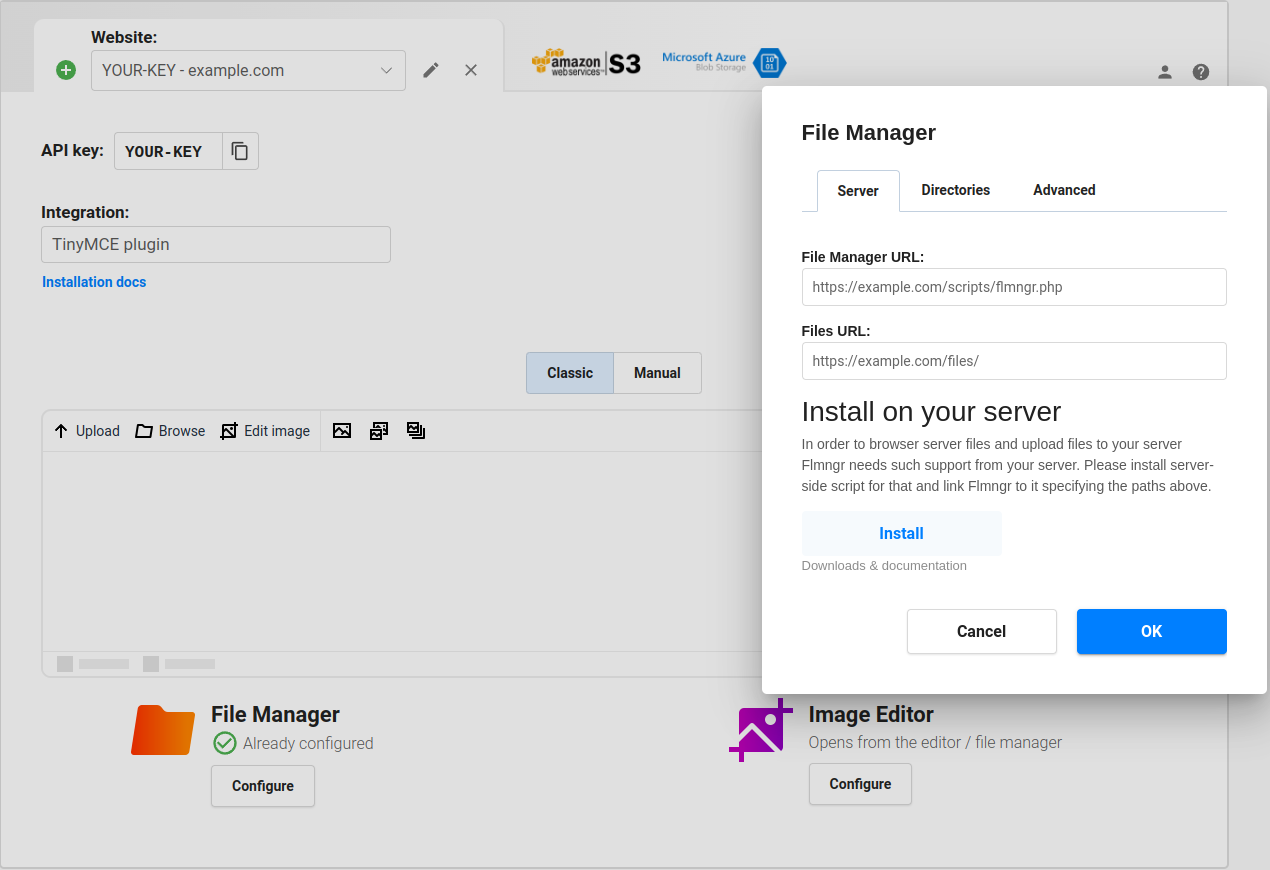Install PHP file manager by including PHP files
Download
Despite the fact that the best solution for modern projects is to install the Flmngr Composer package, there is a set of cases when a project does not use Composer. Especially for those cases, we've prepared a no-Composer version and published it as a ZIP file:
Unpack it into your project and edit flmngr.php file. By default it configured to work with sample files shipped in the archive. Change the value of dirFiles parameter to some path where you store your files, for example '/var/www/my-website/files':
<?php
require __DIR__ . '/vendor/autoload.php';
use EdSDK\FlmngrServer\FlmngrServer;
FlmngrServer::flmngrRequest(
array(
'dirFiles' => '/var/www/my-website/files'
)
);
Be sure that this path with files is publicly available through web.
Update
When you need to update the package, just re-download it and overwrite all the files. If you made some changes to the config inside flmngr.php, please copy an existing config to the updated file.
Link Flmngr with the server
Using the visual Dashboard, you can specify the URLs of your server to link Flmngr with it.
- File Manager URL is the full URL of
flmngr.php. - Files URL is the full URL of
dirFiles(not a directory path, but an URL).

Note: Alternatively, you can pass these parameters as Flmngr.urlFileManager and Flmngr.urlFiles parameters into the Flmngr config. This is useful when you need to use different directories based on the current user to support multi-user installations.
Files URL explanation
The Files URL option is the prefix Flmngr will add to any file when inserting it into your content (or returning it into a callback of your API call). If you can use Flmngr fine, but all inserted images are broken, please see this sample to understand how it works:
Multi-user environment
Flmngr can work in applications where you have many users with different storages. You can programmatically specify Flmngr.urlFiles and dirFiles parameters synchronously with values based on the current user's session.